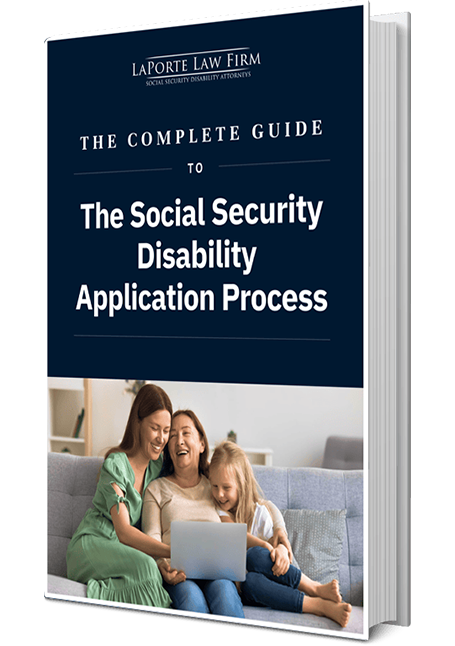
Curious how the recent or upcoming changes to Social Security could affect your disability benefits? With annual changes due to COLA (cost-of-living adjustment) increases, for example, staying informed is particularly important for anyone who depends on this critical support.
Social Security is a cornerstone of financial support for millions of Americans with disabilities. As demographic and economic pressures evolve, policymakers continue to adjust rules to preserve the long-term viability and equity of the program. What changes have been made this year, and what changes should you expect in the coming months? Continue reading this blog post to stay informed on what’s to come later in 2025 and toward 2026.
What You Need to Know
As of the second quarter of 2025, several substantial changes to Social Security Disability Insurance (SSDI) and Supplemental Security Income (SSI) have occurred, and others are set to take effect. Understanding these reforms is vital for beneficiaries and their families to navigate potential impacts on eligibility, income, and healthcare access.
Social Security disability programs (SSDI and SSI) and their differences
SSDI and SSI are both programs that support disabled individuals who cannot work, but they serve different populations and have distinct financial and medical eligibility rules.
SSDI (Social Security Disability Insurance) covers workers who have paid into the system through payroll taxes and become disabled.
On the other hand, SSI (Supplemental Security Income) is a needs‑based program for low‑income disabled or elderly individuals, often including those with limited work history.
Importance of understanding upcoming changes
Annual adjustments affect benefit amounts, eligibility thresholds, and program access. Staying informed helps beneficiaries maximize support and avoid surprises during transitions.
Reasons for the COLA increases
The Social Security Administration (SSA) calculates COLA based on increases in the CPI‑W (Consumer Price Index for Urban Wage Earners). This ensures benefits keep pace with inflation.
What is the potential impact on beneficiaries? Well, for example, the 2025 COLA is 2.5% for SSDI, SSI, and retirement benefits, with benefit increases that were effective in January 2025 for Social Security and December 31, 2024 for SSI. The maximum SSDI benefit increased to approximately $4,018 per month with the average SSDI benefit lifting from $1,537 to $1,580. SSI maximum monthly federal payments rose to $967 for individuals and $1,450 for couples.
Based on current CPI-W readings, some groups estimate the 2026 COLA to increase slightly to 2.6%, while others predict a 2.4% COLA for 2026, citing a slowdown in inflation and stabilization in consumer prices.
The official announcement from the SSA will be released by October 2025.
The idea behind the annual COLA increases is that these adjustments can help preserve beneficiaries’ purchasing power. However, rising healthcare and living costs at higher rates than the annual COLA still pose challenges to affordability for basic goods and services.
How SGA Determines Disability Eligibility, and What’s Changing in 2025
What is SGA (substantial gainful activity)?
SGA is a monthly income threshold the Social Security Administration uses to assess whether a disability claimant can engage in “substantial gainful activity” — that is, work that demonstrates a meaningful capacity to earn. If your earnings exceed the SGA level, the SSA generally considers you not disabled, regardless of the severity of your medical condition.
Implications for eligibility
The SSA reviews your gross monthly earnings, adjusted by allowable exclusions. Income below the SGA limit helps establish eligibility for SSDI. Often, it also establishes eligibility for SSI, especially when factoring in the SSA’s income exclusions such as Impairment-Related Work Expenses (IRWEs, or costs you pay out-of-pocket for items or services you need to work despite your disability such as mobility aids, specialized transportation, or attendant care) or Student Earned Income Exclusion (SEIE, which is a work incentive for individuals under 22 regularly attending school that allows a certain monthly amount of earned income to be excluded when calculating their SSI benefit).
If the net amount exceeds the threshold, benefit eligibility is jeopardized.
SGA limits in 2025
For non-blind individuals, the 2025 SGA limit is $1,620 per month (up from $1,550 in 2024).
For statutorily blind individuals, the threshold increased to $2,700 per month (up from $2,590).
What it means for beneficiaries
If you earn more than these thresholds, even sporadically, the SSA may deny or discontinue SSDI benefits because you are presumed capable of substantial work. However, the SSA recognizes short-term efforts known as an “unsuccessful work attempts,” where work ended within six months due to your impairment. Such activity may be disregarded.
Self-employment is assessed using different methods, focusing more on net income to the business and the amount of hours worked for the business, rather than just income.
For SSI recipients, SGA matters too, but since SSI considers all income and resources, you may still qualify if total countable income remains low.
In Summary
- SGA is a key eligibility test: If your earnings exceed the monthly limit, SSA typically determines you are not disabled.
- The 2025 updates raise the bar modestly, offering a bit more breathing room for disabled individuals returning to work.
- Exceptions and exclusions exist, such as short-term work attempts, self-employment evaluations, and impairment‑related deductions, so navigating the rules carefully is essential.
Modifications to the Trial Work Period
The trial work period (TWP) allows SSDI recipients to test their ability to work without losing their monthly benefits, regardless of how much they earn. The TWP lasts nine service months within a rolling 60-month period. A “service month” is any month in which the individual earns above a set income threshold.
For 2025, that monthly threshold is $1,160. If a person earns more than that in a given month, it counts as one of their nine TWP months. Once all nine months are used, the individual moves into a 36-month extended period of eligibility (EPE), during which benefits may stop if earnings exceed substantial gainful activity levels.
Expected changes and effects on beneficiaries
In 2026, the TWP monthly threshold is expected to increase to reflect wage growth. Although the SSA has not finalized the new figure for 2026, it typically increases annually with national average wage indexing. A projected increase might place the 2026 TWP threshold above $1,160 per month.
Higher thresholds may give recipients more flexibility to explore part-time or transitional work without using up their nine trial months too quickly. This change benefits individuals recovering from illness or adjusting to new workplace accommodations.
Updates to Earnings-Test-Exempt Amounts
The earnings-test-exempt amounts apply to Social Security retirement beneficiaries under full retirement age and some disabled workers who receive income from work. If these individuals earn more than the exempt limit, their monthly benefits may be reduced temporarily.
For example:
- In the year before reaching full retirement age, $1 in benefits is withheld for every $2 earned over the limit.
- In 2025, the annual exempt limit is $23,400 for beneficiaries under full retirement age. For people attaining normal retirement age (NRA) in 2025, the annual exempt amount is $62,160.
This means individuals will be able to earn slightly more before seeing a reduction in their Social Security checks.
Maximum Taxable Earnings Adjustments
Maximum taxable earnings refer to the cap on income subject to Social Security payroll taxes (FICA). In 2025, this cap is $176,100. Income above that is not subject to the 6.2% Social Security tax (though Medicare taxes apply without limit).
Anticipated changes
In 2026, the earned income cap is expected to increase, based on wage growth. Higher caps mean increased payroll tax revenue, helping to support Social Security solvency. High-income workers and their employers will contribute more, potentially strengthening the Social Security trust funds.
Streamlining Application Procedures
To address backlogs and long wait times, the SSA is expecting to initiate reforms in the following areas:
Digitization of applications and medical record collection
The SSA’s FY 2025–26 plans highlight a push to modernize information technology and improve digital service delivery. This includes increasing electronic medical evidence acquisition to 58% of all medical records, a clear effort to digitize the application process and reduce reliance on paper submissions.
Case screening automation
The SSA reports that around 40–42% of calls are now handled via automated self-service or callback systems, up from roughly 5% in 2024. This reflects expanded automation in both intake and routine customer interactions
In addition, the agency aims to drive average phone wait times into the single-digit minutes using AI tools, down from about 30 minutes in early 2025.
These changes aim to reduce the average disability determination time on the initial application, which currently exceeds seven months in many cases.
As of July 2025, the average time from application to initial disability determination remains at approximately 284 days (over nine months), per the SSA’s performance data updated July 2, 2025. Also, the SSA reports a 25% reduction in initial claims backlog, down from a peak of 1.2 million to about 950,000 pending cases
Critics warn that the agency has removed detailed performance metrics from publicly accessible dashboards, making independent verification of progress difficult.
Enhancements in addressing mental health disabilities
The SSA has made updates to mental health listings and guidance for adjudicators, improving how conditions such as PTSD, bipolar disorder, schizophrenia, and neurodevelopmental disorders are evaluated.
Reforms have included updated psychological evidence requirements, better integration of functionality assessments (e.g., concentration, social interaction), and consideration of episodic and fluctuating symptoms. The last full-scale update to the SSA’s mental health listings occurred in January 2017, based on a final rule published in September 2016. While SSA has maintained internal policy updates (e.g., POMS revisions), there hasn’t been another comprehensive revision of Section 12.00 since then.
Alterations in Medicare Waiting Periods
SSDI recipients become eligible for Medicare coverage only after a 24-month waiting period, beginning the first full month they receive cash benefits. This delay can leave severely disabled individuals uninsured or underinsured during a critical time.
Proposed changes and benefits
There are current proposals in Congress to eliminate or reduce the 24-month waiting period for Medicare eligibility, particularly for individuals with:
- Terminal illnesses
- Rare diseases
- Mental health conditions with severe limitations
Removing or shortening the waiting period for Medicare eligibility would allow earlier access to essential care, potentially preventing medical deterioration and improving long-term outcomes.
SSI Income and Resource Limits Adjustments
Supplemental Security Income limits eligibility based on:
- The current SSI resource limit — $2,000 for individuals and $3,000 for couples (unchanged since 1989).
- The SSI income limit. As of 2025, the SSI income limit is $967 per month for individuals and $1,450 per month for couples. Countable income reduces the SSI payment, though the SSA applies certain income exclusions, such as the first $20 per month of unearned income or the first $65 per month of earned income, plus half of the remainder.
The Social Security Fairness Act and What It Means
The Social Security Fairness Act (H.R. 82 / Public Law 118‑273) was signed into law on January 5, 2025, officially repealing the Windfall Elimination Provision (WEP) and the Government Pension Offset (GPO).
This repeal applies retroactively to benefits payable after December 2023, meaning affected retirees began receiving corrected payments from January 2024 onward.
Who gains from the repeal?
The repealed provisions had previously impacted 2.5 to 3.1 million Americans, primarily including public sector workers, such as teachers, police, firefighters, and federal employees, and their spouses or survivors. Affected individuals are now receiving full Social Security benefits without reduction.
Windfall Elimination Provision (WEP)
WEP previously reduced Social Security retirement or disability benefits if the individual also received a non-covered pension (e.g., from public employment without Social Security contributions). Its repeal restores full benefit-calculation formulas, eliminating past reductions.
Government Pension Offset (GPO)
GPO had reduced or eliminated spousal or survivor Social Security benefits by offsetting two-thirds of the non-covered government pension. This often significantly impacted widows or surviving spouses. With the repeal, eligible individuals now receive unreduced spousal and survivor benefits.
Financial impact examples
Under prior rules, individuals could lose $400–$600 or more per month, depending on their pension level and work history. The repeal often restores these losses.
Average monthly benefit increases range from $360 to over $1,000, with retroactive payments averaging $6,700. The SSA had issued about $17 billion in retroactive payments by July 2025.
Implementation timeline
The SSA began issuing retroactive lump-sum payments starting February 25, 2025, focusing on automation for simpler cases, with notices mailed shortly after. Most new monthly benefit amounts were reflected starting in April 2025.
Complex cases are still being processed; approximately 91–92% of payments were completed by mid‑2025.
Impact on trust and solvency
Despite bipartisan political support, financial analysts and SSA actuaries warn that the repeal increases Social Security costs modestly, by about 0.14% of taxable payroll, and could accelerate projected trust fund depletion by up to six months.
Cost-of-living adjustments, higher work incentives, and eligibility expansions all influence the financial health of the Social Security trust funds.
As of the latest 2025 Trustees Report, the Disability Insurance (DI) Trust Fund is projected to remain solvent until 2099, and the Old-Age and Survivors Insurance (OASI) Trust Fund until 2033, unless Congress takes action. You can read the official press release here.
The combined OASDI funds are projected to run out in 2034, assuming legal authority to combine reserves. Without that change, the effective cutoff occurs when the OASI fund depletes in 2033.
Proposed funding solutions include:
- Raising or eliminating the payroll tax cap
- Gradually increasing the FICA tax rate
- Diversifying investment of trust fund assets
Confused about the Social Security disability application process or how recent changes to Social Security may affect your benefits? LaPorte Law Firm answers your questions with clarity and care. Reach out today for expert guidance and peace of mind.
FAQS
The Cost-of-Living Adjustment (COLA) for 2025 is 2.5%, applicable to both SSDI and SSI benefits. SSDI benefits increased starting in January 2025, and SSI benefits have reflected COLA beginning with the December 31, 2024 payment. The 2026 increase will be announced by October 2025.
The 2025 SGA limit has been raised to $1,620/month for non‑blind individuals and $2,700/month for statutorily blind individuals
Yes. In 2025, the monthly TWP threshold increases to $1,160, meaning any month you earn that amount or more counts as a service month. You get up to nine service months within a rolling 60-month period to test working without ending SSDI benefits.
The Social Security Fairness Act became law on January 5, 2025, repealing both the Windfall Elimination Provision (WEP) and Government Pension Offset (GPO). It restores full benefits for public sector employees and survivors who previously had benefits reduced due to non-covered pensions.
Federal SSI benefit income levels increase in line with COLA: $967/month for individuals and $1,450/month for couples.
Asset limits remain unchanged at $2,000 for individuals and $3,000 for couples, unchanged since 1989, and are not currently indexed for inflation.
















